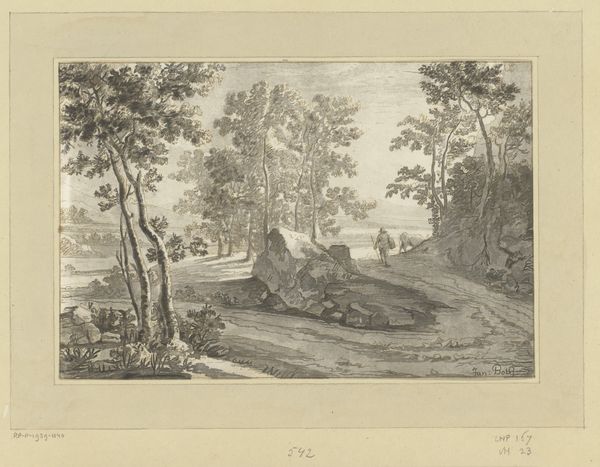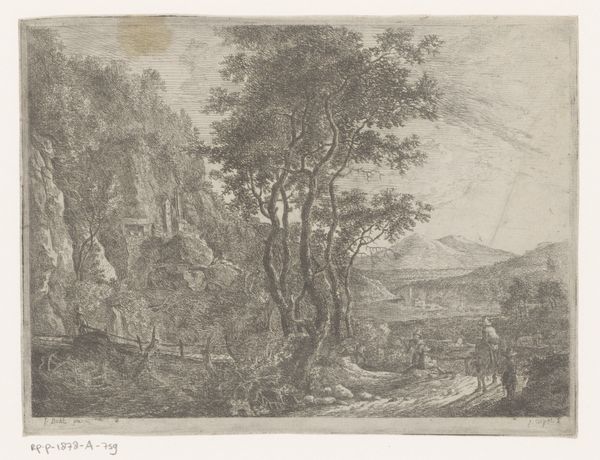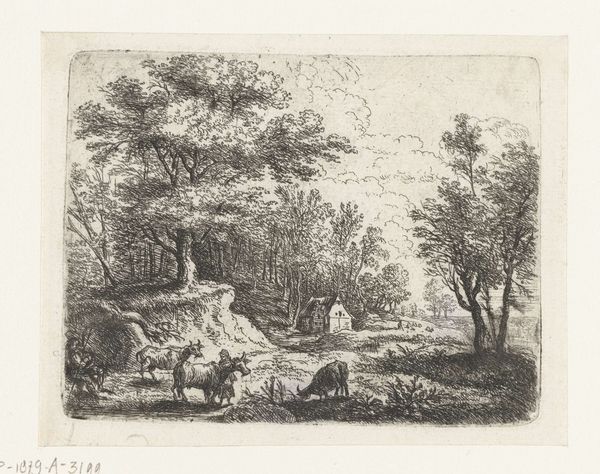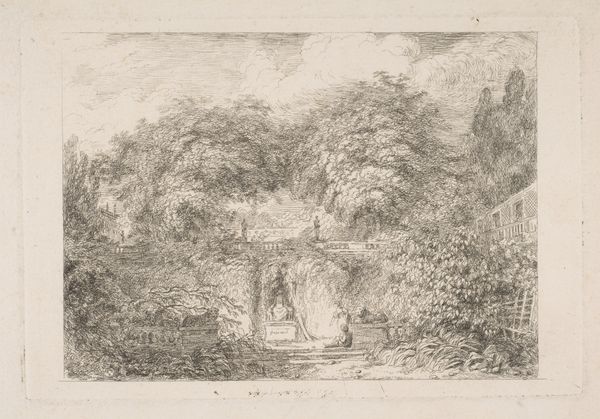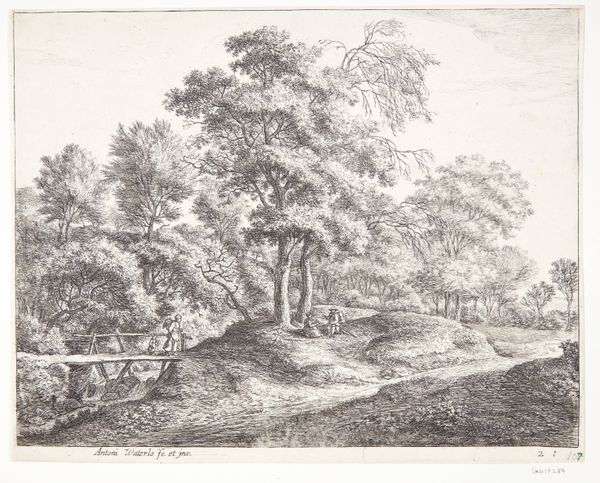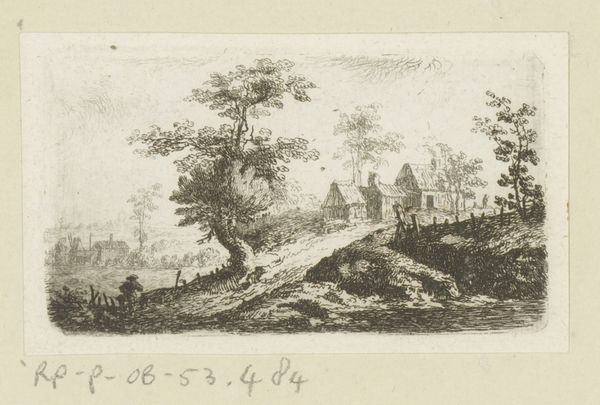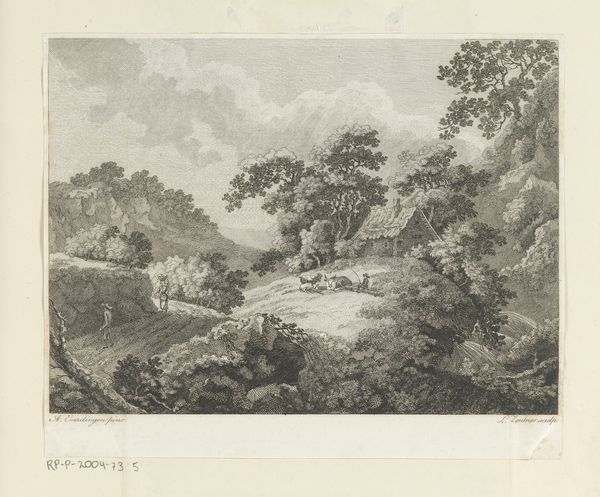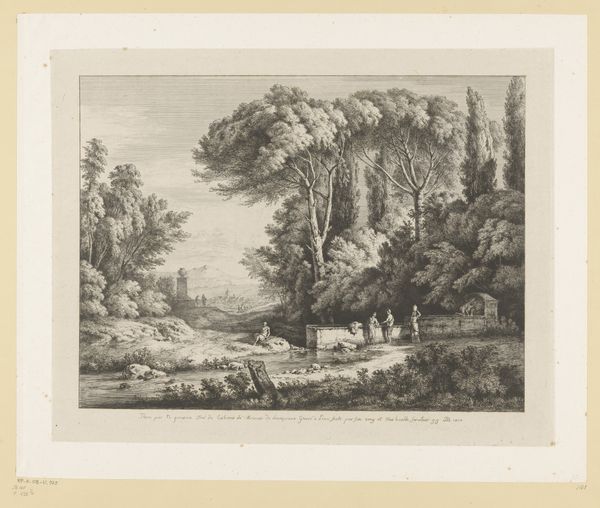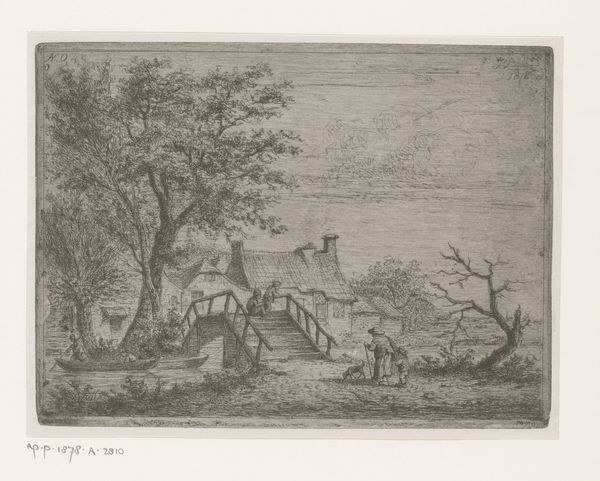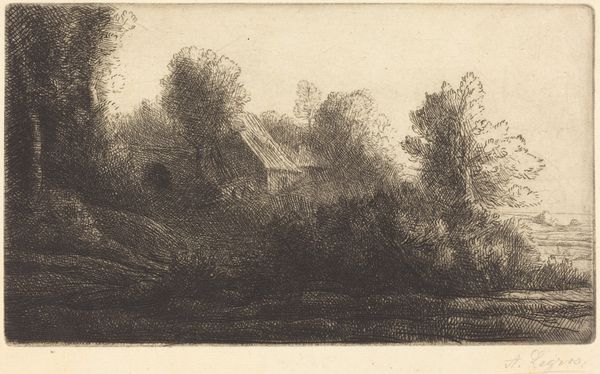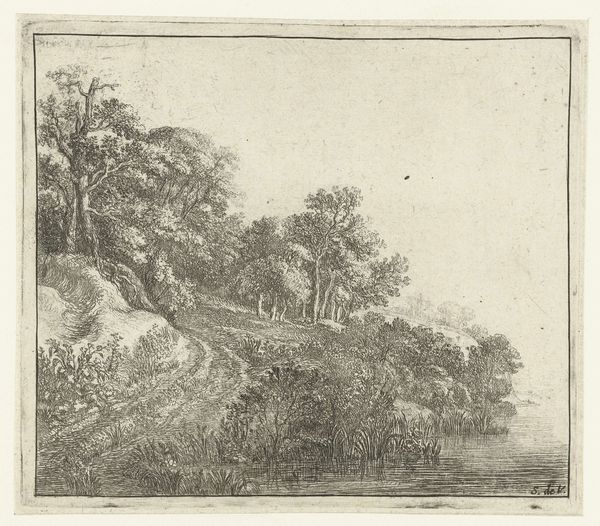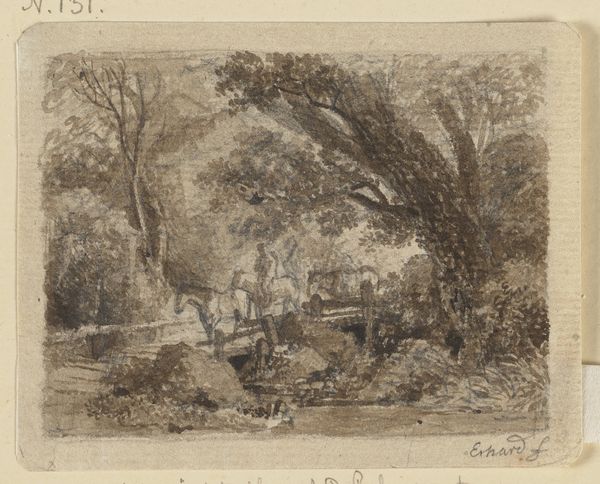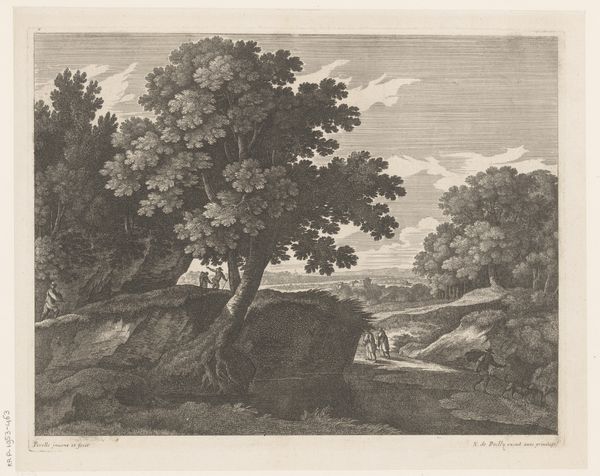
Dimensions: height 75 mm, width 134 mm
Copyright: Rijks Museum: Open Domain
Johann Andreas Benjamin Nothnagel created this delicate etching depicting a horseman crossing a wooden bridge, sometime in the 18th century. Etching involves coating a metal plate with a waxy, acid-resistant material called a ‘ground.’ The artist then scratches through the ground with a needle to expose the metal, and the plate is immersed in acid, which bites into the exposed lines. This painstaking process allows for incredibly fine detail, and a wide range of tonal effects depending on the depth of the etching. The resulting print, like this one, possesses a unique surface quality, a testament to the labor-intensive and highly skilled printmaking processes that flourished during the early modern period. Although mass production of prints existed, the creation of etched plates like this one was the result of individual craftsmanship. It’s a reminder that even in an age of increasing industrialization, hand-based skills remained vitally important. Appreciating the materiality and making of this print enriches our understanding of its cultural significance.
Comments
No comments
Be the first to comment and join the conversation on the ultimate creative platform.
